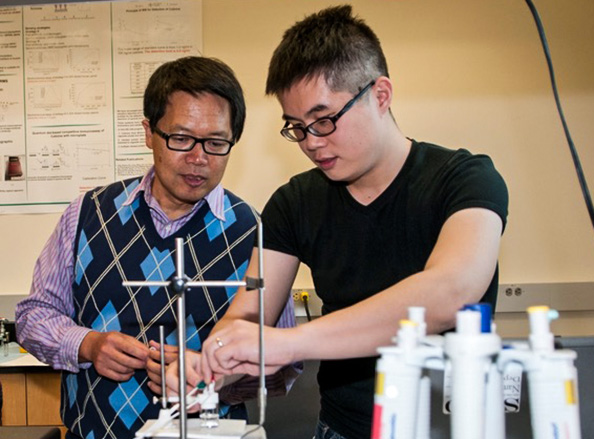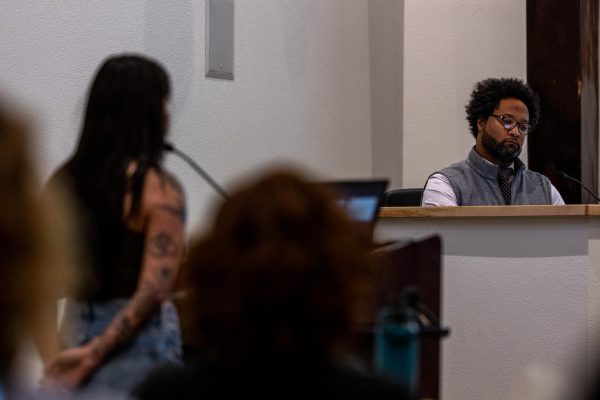Researchers develop new cancer treatment
Low-dosage method to kill cancer cells has fewer side effects

WSU researchers worked with the Department of Energy’s Pacific Northwest National Laboratory to develop a new low-dose cancer treatment.
October 29, 2019
WSU researchers collaborated with the Department of Energy’s Pacific Northwest National Laboratory to develop a low-dose targeted cancer treatment with fewer side effects.
Yuehe Lin, WSU professor in the school of mechanical and material engineering and lead researcher, said the new technology serves as a nontoxic treatment that targets and kills cancer cells.
The technology works by using peptoid nanotubes, which are small tubes made from organic molecules to deliver drugs into the body. The drugs will then target and only kill cancer cells, he said.
This method of treatment should prove to have few negative side effects, he said.
“Standard chemotherapy treatments for cancer kill not only cancer cells, but it kills healthy cells at the same time. Killing these healthy cells leads to side effects in cancer patients such as hair loss and sickness,” said Lin.
He said the new technology treatment releases one drug for chemotherapy and another for photodynamic treatment, which is used to kill cancer cells in the body. These two drugs together then target and kill cancer cells, he said.
Chun-Long Chen, senior research scientist at PNNL, said the new technology treatment could potentially change the way cancer is treated. The goal is to improve the efficiency of the drug, while also reducing side effects.
“Patients might need a lot of anti-cancer drugs, but now this new treatment offers a more efficient way than it used to be,” he said.
Lin said that by using fluorescent dyes on the nanotubes, the researchers can easily find where the tumor cells are and how effectively the drug targets the cancer cells. These fluorescents also allow researchers to see how the nanotubes enter and deliver the drug, he said.
Leeida Broom, survivor of ovarian cancer, said that she thinks any treatment that could reduce the side effects of chemotherapy would be wonderful. She said she received four doses of chemo when she had cancer.
“The chemo made me feel sick, and it felt like it took away all the energy that I had. You feel almost helpless,” she said.
She said that if there was a treatment that has fewer side effects, she thinks it could possibly make cancer patients feel like they have hope.
“I remember when I lost all of my hair from the chemo, so I know what it’s like to have to deal with the side effects that come from treatment, she said.
Chen said that the PNNL and WSU have a joint patent for the technology. He said that the group has spoken with potential collaborators to continue testing.
He said the next step for the technology treatment is to test if it will work to kill cancer in rodents. Chen said the goal is to see how the multifunctional nanotube drugs will work to cure cancers in rodents, while not triggering negative responses to the technology and other toxicities.














